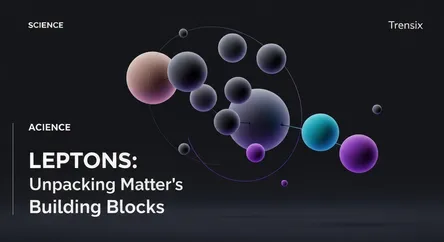Science
Leptons: Unpacking Matter's Building Blocks

An introduction to leptons, the fundamental particles like electrons and neutrinos that are key to understanding matter and physics beyond the Standard Model.
What is it?
Leptons are a class of elementary particles, meaning they are fundamental building blocks of matter that are not composed of smaller units. There are six types, or "flavors," of leptons. Three carry a negative electric charge: the familiar electron, the muon, and the tau. The other three are their neutral partners, known as neutrinos: the electron neutrino, muon neutrino, and tau neutrino. Unlike quarks, which make up protons and neutrons, leptons do not interact via the strong nuclear force. This allows them to exist independently. The electron, for instance, orbits the nucleus of an atom but isn't part of it.
Why is it trending?
The study of leptons is a frontier for discovering physics beyond the Standard Model, our current best theory of particle physics. Phenomena like neutrino oscillations—where neutrinos change flavor—violate certain rules of the model and are considered strong evidence for new physics. Scientists are also conducting high-energy experiments to search for rare lepton decays. These experiments could reveal the existence of undiscovered particles or forces, potentially supporting theories like supersymmetry. Furthermore, the ongoing search for a hypothetical "sterile neutrino" is trending because it may be a candidate for dark matter.
How does it affect people?
The most common lepton, the electron, is essential to modern life; the flow of electrons creates the electricity that powers our world. Studying leptons helps us answer fundamental questions about the universe, such as how stars generate energy and why matter triumphed over antimatter after the Big Bang. This deepens our understanding of reality and drives technological innovation. Research into particle accelerators and detectors, which are necessary to study leptons, often leads to advancements in computing, materials science, and medical imaging techniques like PET scans, which rely on electron-positron annihilation.